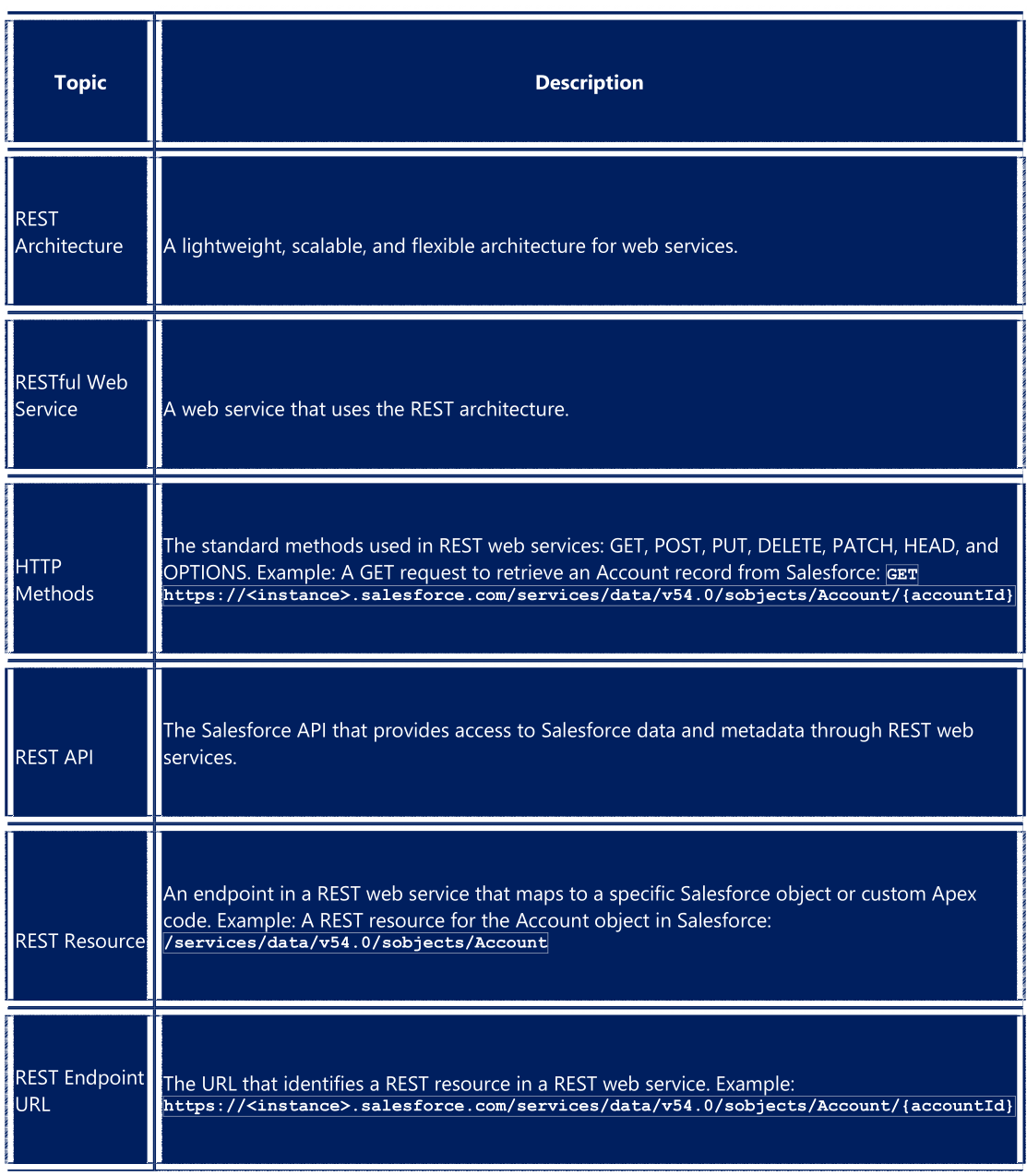REST Integrations In Salesforce
Are you looking to integrate Salesforce with other systems or applications? REST (Representational State Transfer) Web Services can help you do just that. REST is a widely used architectural style that enables communication between different systems over HTTP. It’s a popular choice for building integrations because of its simplicity and flexibility.
In this post, I will cover everything you need to know about REST Web Services, including how they work, the benefits of using them, and some best practices to keep in mind. And to help you get started with implementing REST integrations in Salesforce, I have also included cheat sheet tables with sample code snippets and examples.

What Are REST Web Services?
REST Web Services are a set of rules and protocols for building web-based APIs (Application Programming Interfaces). The main idea behind REST is to use the HTTP protocol to make requests and receive responses between systems. The HTTP protocol is widely used and understood, which makes REST an accessible and versatile option for integrations.
REST APIs have a few key characteristics:
- Resource-based: REST APIs are centered around resources, which are identified by unique URIs (Uniform Resource Identifiers). Resources can be anything from a record in a database to a file on a server.
- Stateless: REST APIs are stateless, meaning that each request contains all the information necessary for the server to process it. The server doesn’t need to remember anything from previous requests.
- Operations-based: REST APIs use standard HTTP operations (GET, POST, PUT, DELETE, etc.) to perform actions on resources.
Why Use REST Web Services?
There are several benefits to using REST Web Services for integrations:
- Simplicity: REST is a relatively simple and lightweight protocol compared to other options like SOAP (Simple Object Access Protocol).
- Flexibility: Because REST APIs use standard HTTP operations, they can be used with a wide range of systems and programming languages.
- Scalability: REST APIs can be designed to scale horizontally by adding more servers to handle increased traffic.
- Ease of testing: Because REST APIs are stateless, it’s easy to test individual requests and responses without worrying about the state of the system as a whole.

Best Practices for Using REST Web Services
Here are some best practices to keep in mind when designing and implementing REST Web Services:
- Use HTTP status codes: Use standard HTTP status codes (e.g. 200 for success, 404 for not found, etc.) to indicate the outcome of requests.
- Follow RESTful principles: Follow the principles of REST, such as resource-based identification and standard HTTP operations, to make your APIs more consistent and predictable.
- Document your APIs: Provide clear and comprehensive documentation for your APIs, including how to authenticate and examples of requests and responses.
- Consider security: Use HTTPS (HTTP Secure) to encrypt traffic between systems, and implement authentication and authorization mechanisms to ensure that only authorized users can access your APIs.
Cheat Sheet: REST Web Services in Salesforce
To help you get started with implementing REST Web Services in Salesforce, we’ve put together a cheat sheet with sample code snippets and examples. Use this cheat sheet as a quick reference guide for creating, testing, and managing REST integrations in Salesforce.
Table 1: REST Resources, APIs, Authentication, Endpoints and More
Use this cheat sheet to understand how to define REST resources and endpoints in Salesforce. Be sure to replace the placeholders with the appropriate values for your integration.



Table 2: REST Request, Response Methods, Status Codes and More
Use this cheat sheet to understand how to format REST requests, understand all the methods used, sending request, getting responses and more.



Conclusion
RESTful APIs have become a standard way to build web services. They provide a flexible and scalable architecture that allows developers to create a wide range of applications. By using this cheat sheet, you can quickly learn the basics of RESTful APIs, HTTP methods, HTTP status codes, and how to format REST requests. With this knowledge, you can start building your own RESTful APIs and consuming third-party APIs.
Remember to always use best practices when building RESTful APIs, such as keeping URLs simple and intuitive, using HTTP methods appropriately, and returning appropriate HTTP status codes.
I hope you found this cheat sheet and guide to RESTful APIs helpful. If you have any questions or feedback, please feel free to leave a comment below.


